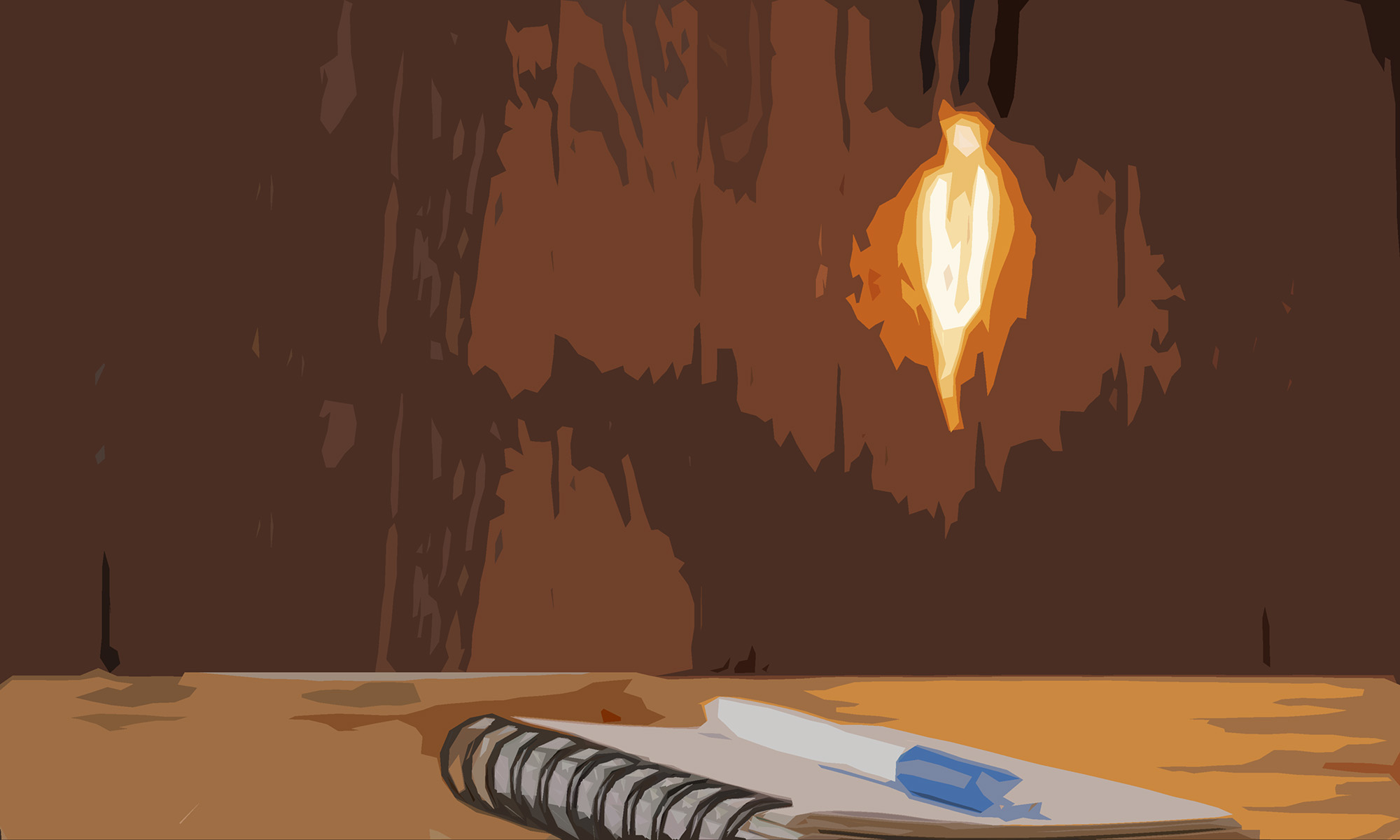A Periodic Heating into Different Layers of a Semi-Infinite Solid
Shalom Sadik
Journal of The Institution of Engineers (India): Series C, 102, 545–552, 2021.
Abstract: This paper deals with a periodic heating into different layers of a semi-infinite solid in order to examine the thermal parameters influence of the different layers on the development of the temperature oscillations. This influence is introduced by a physical model that shows the temperature evolution in every location into the solid layers as a function of time. It was shown that the structure with the larger thermal conductivity in the semi-infinite layer has larger absolute gradient of temperature on the external surface (the system left surface). Received at certain times temperature distributions with extreme, maximum or minimum temperatures values. These values actually represent adiabatic surfaces at the relevant times, meaning that heat transfer, entry or exit occurs in the limited volume between the constraint surface and those adiabatic surfaces. These temperature distributions also show receiving of identical, positive or negative values along all the medium depth. At the start time of the time period and at the half time of the time period, linear temperatures distributions are obtained. These times can be seen as weakening times in terms of supporting the transient heat transfer. The temperature distribution in the structure of a wall made up of real building materials shows that the wall is a retainer for temperature fluctuations and not just is a basic resistance to heat transfer.

Temperature Oscillations into a Couette – Poisseuille Flow
Shalom Sadik
Energy and power Engineering, 10, 414 – 433, 2018.
Abstract: Following previous work that discussed temperature fluctuations without flowing media a physical model of temperature oscillations into a Couette-Poiseuille flow was built. The temperature distribution into the flow was calculated according to oscillations constraints on the upper and lower plates, and heat dissipation due to shear stresses into the fluid. The physical model deals with different temperature amplitudes and different frequencies constraints on the upper and the lower plates. A physical superposition and complex numbers were used. It was shown that when the constraint frequency increases, its penetration capacity is reduced. Increasing gap width between plates leads to increased fluid temperature values due to enlarged fluid velocity. Increasing thermal diffusivity, increases constrains temperatures penetration intensity.

A Model of Two Cylindrical Plane Wall Layers Exposed to Oscillating Temperatures with Different Amplitudes and Frequencies
Shalom Sadik
Journal of Zhejiang University-SCIENCE A, 18 (12), 974-983, 2017
Abstract: A linear model of two cylindrical plane wall layers exposed to oscillating temperatures and frequencies was built using a physical superposition of two states. In the first state, the inner surface of a wall was exposed to oscillating temperature and the outer surface was exposed to a zero relative temperature. In the second state, the inner surface was exposed to a zero relative temperature while the outer surface was exposed to an oscillating temperature with different amplitude and frequency. Temperature distributions were derived for different amplitudes, frequencies, and thermal conductivities. Results show that increasing the frequency decreased the depth of temperature penetration. A high frequency led to extremum temperature values on the surface, while a low frequency allowed gradual temperature changes during the time period. Temperature distribution lines showing simultaneous heat flux entry and exit were not observed.

A Three Layers Plane Wall Exposed to Oscillating Temperatures with Different Amplitudes and Frequencies
Shalom Sadik
Energy and power Engineering, 10, 165 – 185, 2018.
Abstract: A linear model of three layers plane wall exposed to oscillating temperatures with different amplitudes and frequencies was built by using a physical superposition. A physical superposition of two states was performed, one state is a wall which one surface is exposed to oscillating temperature and the other surface is exposed to zero relative temperature and a second state is a wall which one surface is exposed to relative zero temperature while the other surface is exposed to oscillating temperature with different amplitudes and frequencies. Temperature distributions were introduced for different amplitudes, frequencies and thermal conductivities. It was shown that increasing the frequency value decreases the temperature penetration length, high frequency value leads to extremum temperature values changes on the surface while low frequency value allows gradually temperature changes during the time period. Temperature distribution lines where there are at the same time heat flux entry and heat flux exit were not received for the same constraint frequencies.

A Flow Field between Two Oscillating Plates with Different Amplitudes and Frequencies
Shalom Sadik
Journal of the Chinese Society of Mechanical Engineers, Vol. 38, No. 1, pp. 99-109, 2017.
Abstract: A linear physical cases extension of the Stokes second problem to a flow field between two oscillating plates with different amplitudes and frequencies for one homogenous fluid and two fluids is presented. The solution presented may be applicable to any number of fluids. As a first stage, a homogeneous fluid flow field between two oscillating plates were derived. The plates are oscillating with different amplitudes and frequencies. As a second stage a two fluids flow field between the oscillating plates was derived. The fluids are characterized by different viscosities. Actually, six problems solutions were received: a homogeneous fluid flow field between a bottom plate oscillating and an upper plate standing, a homogeneous fluid flow field between an upper plate oscillating and a bottom plate standing, a homogeneous fluid flow field between upper and bottom plate oscillating, a two fluids flow field between a bottom plate oscillating and an upper plate standing, a two fluids fluid flow field between an upper plate oscillating and a bottom plate standing and a two fluids fluid flow field between upper and bottom plate oscillating. It was shown that a physical superposition using leads to get a full solution. Complex numbers was used for solution, it was shown that in order to get an exact solution all the complex number parts, the real and the imaginary parts, has to fulfill the problem boundary conditions. Leading parameters influence was examined. It was shown that reduced fluids viscosity and increased plate frequency increases the velocity lines density.

Turned Trochoidal Disturbance on a Liquid Jet Surface
S. Sadik, Kirzhner F., Kramarenko D.
Chinese Journal of Mechanical Engineering, Vol. 27, No. 4, 2014.
Abstract: This paper shows that a turned trochoidal function disturbance may lead to peripheral drops production. The resulting model is used to describe that a turned trochoidal disturbance leads to peripheral drops production on the liquid jet surface without the necessity for superimposed disturbances. The trochoid is a non-unique parametric function. Only non-unique parametric functions disturbances may lead to peripheral drops production. The trochoidal function disturbance is decomposed to Fourier series. Every Fourier element receives an amplification factor in accordance to the Rayleigh inviscid jet model. Peripheral drops are received on the jet surface. The paper shows that all trochoidal disturbance functions, prolate cycloid, cycloid and curtate cycloid have a capability of peripheral drops producing. A limited capability of peripheral drops production is introduced for the trochoidal curtate cycloid. Produced drops size are reduced for increasing the jet velocity and wave number. Smaller drops are also received by transition from the prolate cycloid to curtate cycloid disturbance.

Polar Instability of Superimposed Disturbances in Spray Formation from Liquid Jets
S. Sadik and Y. Zimmels
Journal of Atomization and Spray, Volume 14, Issue 6, pp.563-587, 2004.
Abstract: The concept of superimposed sequence of nonaxial and polar disturbances that propagate one on top of the other, in the process of spray formation from jets, is introduced. The axisymetric ligaments and drops that are formed in this process, including toroidal forms of drops, can sustain a wide range of polar disturbances on their surface. A new dispersion equation that generalizes the one of the Rayleigh model is developed. This dispersion equation provides solutions for axipolar instability parameters of hollow jets, and radially disconnected parts of axisymmetric ligaments and drops. The axipolar instability parameter is shown to depend on axial and polar wave numbers and on the solution parameter, kf, obtained, in conjunction with K n(kr) which satisfies the modified Bessel equation of the pressure perturbation. Domains where a positive axipolar instability parameter exists are defined and related to the axial and polar wave numbers. Larger domains are associated with larger polar wave numbers. These domains include axial and polar wavelength that are shorter than the jet circumference 2πa and 2π, being in contrast to the Rayleigh model, which allows only values that exceed 2πa and 2π, respectively. The concept of a limiting polar wave number is introduced and used to characterize the system with respect to instability at lower polar wave numbers. It is shown that for systems that can sustain high levels of the limiting polar wave number, the attendant instability parameter turns virtually independent of all lower polar wave numbers. This implies existence of jets that can develop multimodal instability, involving many wave numbers that coexist under the same instability parameter. In this context, the existence of multimodal instability opens new avenues for understanding the process whereby jets evolve into sprays.

On the Mechanisms of Spray Formation from Liquid Jets
S. Sadik and Y. Zimmels
Journal of Colloid and Interface Science, 259, 261-274, 2003.
Abstract: A fundamental physical mechanism whereby sprays are formed from liquid jets is formulated. It is shown that a combination of axial disturbances cannot produce the necessary conditions for nonaxial evolution of drops. These conditions are satisfied by a nonaxial sequence of superimposed disturbances, propagating one on top of the other. The resulting model is used to describe the evolution of liquid jets into sprays. It is postulated that every consecutive superimposed disturbance, which is characterized by a self-instability parameter, travels tangent to the surface that supports its propagation. Model outputs show that starting from the first superimposed disturbance, highly complex profiles of the jet surface are generated. Fourier analysis of the derived superimposed disturbance functions is performed in conjunction with the basic building blocks of classic instability theory. This is achieved by assigning to each term a self-instability factor. The sum of these building blocks results in intricate profiles of the jet. In these profiles, multiplicity of radial position of the jet interface as a function of axial distance provides the necessary conditions for evolution of nonaxial drops. The model accuracy, which depends on the disturbance rank, is sufficient to disclose the mechanism that turns the jet into a spray. The observed jump in the level of error is commensurate with the sudden increase in flow complexity that follows an increase in the disturbance rank. Finally, model outputs are used to study the effect of instability parameters on the evolution patterns of the jet and the nonaxial discharge of drops.

Formation of Sprays from Liquid Jets by a Superimposed Sequence of Nonaxial Disturbances
S. Sadik and Y. Zimmels
Applied Physics Letters, Volume 79, Number 27, 4601-4603, 31 December 2001.
Abstract: A fundamental physical mechanism whereby sprays are formed is formulated. A model of nonaxial sequence of superimposed disturbances, propagating one on top of the other, is used to describe the evolution of liquid jets into sprays. It is postulated that every consecutive superimposed disturbance travels tangent to the surface that supports its propagation. Model outputs show highly nonlinear profiles of the jet surface. Fourier analysis, of the derived superimposed disturbance functions, is performed in conjunction with the basic building blocks of the classical instability theory. Starting from the first superimposed disturbance, the sum of these linear building blocks results in nonlinear intricate profiles of the jet. These profiles are shown to be the source of drops from which a spray is made.

Mechanisms of Nonaxial Disturbances in Evolution Processes of Jets into Sprays
Shalom Sadik
Ph.D. Dissertation
June 2001, Hebrew, Technion-Israel Institute of Technology, Supervisor: Professor Yoram Zimmels of blessed memory.
.

